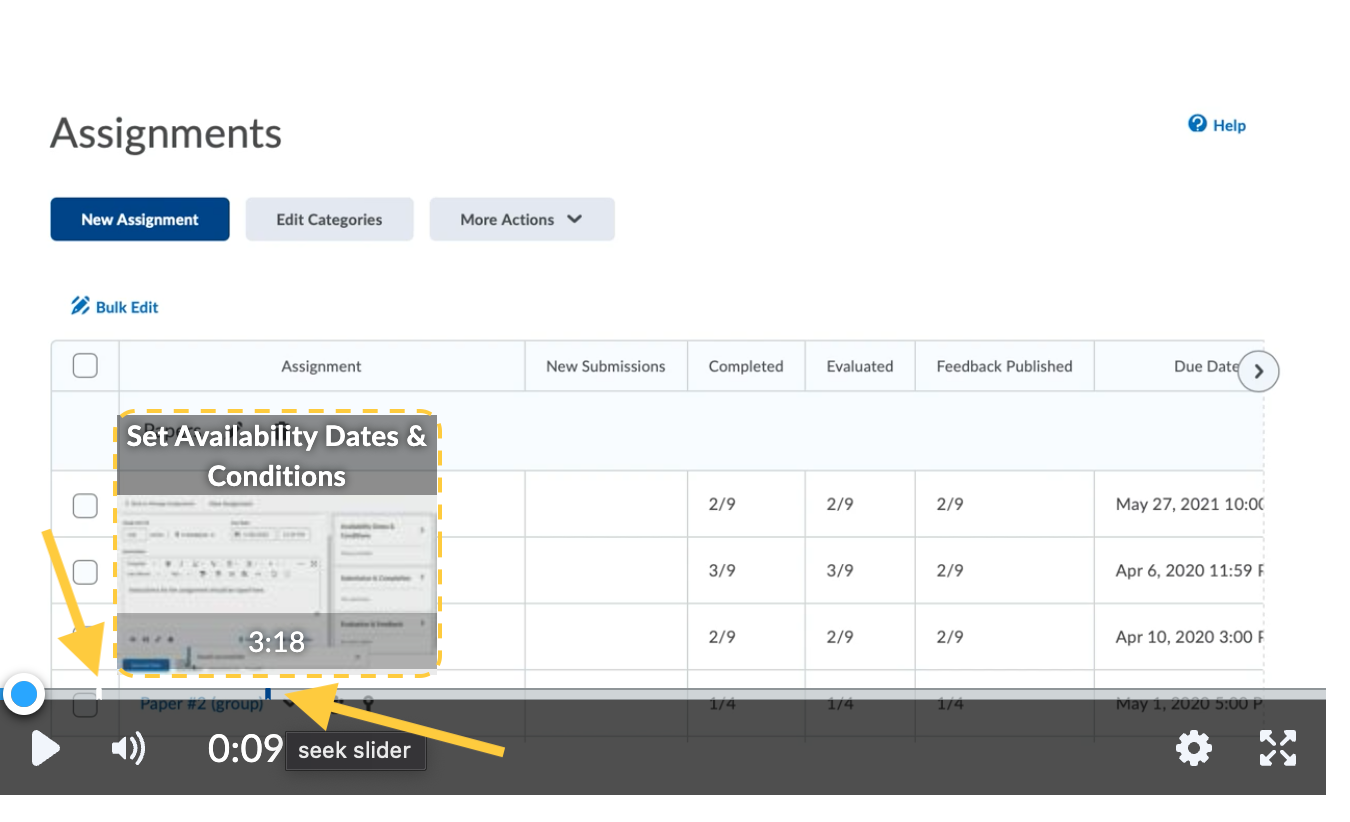Edit Video Notes with the Media Editor
Instructors can edit video timelines, create chapters, and add closed captions for video notes they previously recorded. We recommend using the desktop experience when editing video files.
Features:
- Edit timelines will allow users to skip unwanted sections of a video recording.
- Create a Table of Contents for videos by creating chapter titles to allow quick navigation to specific sections.
- Captions can be uploaded from a .vtt or .srt file or automatically generated to make videos accessible to all users.
- From anywhere in TCU Online, click the Admin cog, then select Audio/Video Note Editor.

- Optional: Search for content. Only content created by you will display.
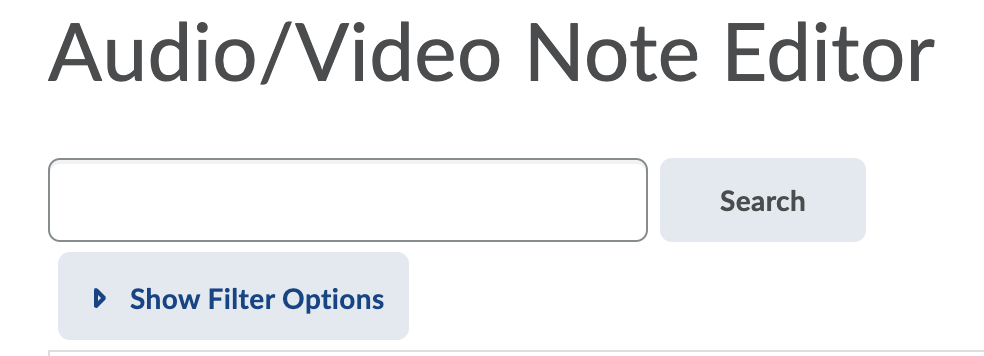
- Use the search field to type the title or keywords for video notes or audio you previously recorded. Click Search.
- Filter your search by clicking Show Filter Options. Check the box for Author, Audio, or Video, then click Search.
- Select the Video Note you wish to edit.
- Do any of the following (click the accordions below for detailed steps):
Use Timeline Editor to Cut Out Parts of the Video
Edit your video using the Seek (arrow), Mark (line), and Cut (scissor) tools.
- To snip out parts of your media file, First, select the Mark (line) tool, and click your mouse on the timeline to mark places on the timeline at the starting point and ending point of the part you wish to remove.
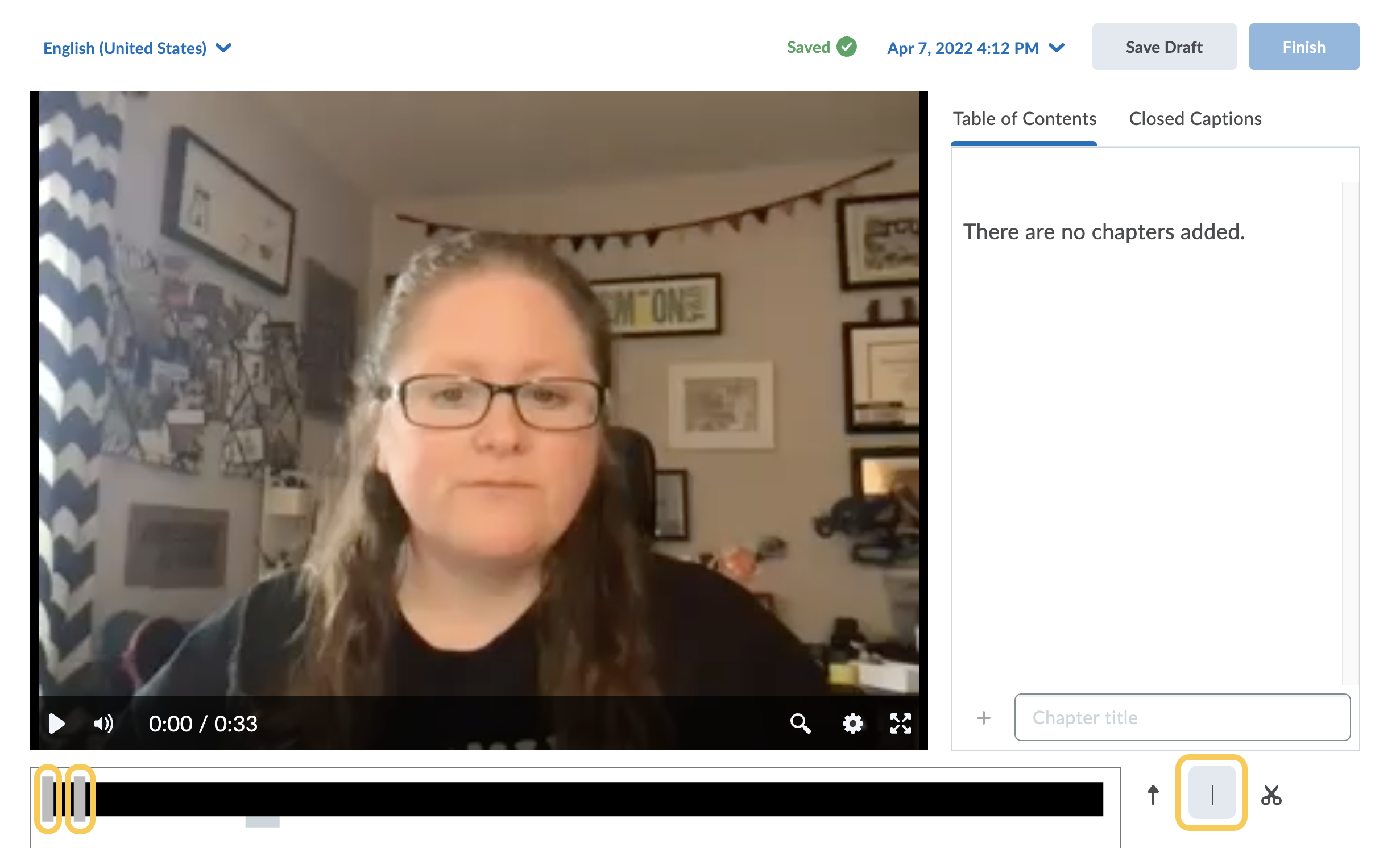
- Select the Cut (scissors) tool and click between the two marks to cut it out. The selected section turns red and is not shown playback.

Note: Mousing over the timeline displays a small tab at the bottom of the timeline that can be grabbed and dragged up and down to enlarge the timeline for accessibility.- To restore the cut section: Select the Cut tool (scissors icon) then click the section on the timeline you want to restore.
- To remove a mark on the timeline, click it again with the Mark tool.
Create Chapters & a Table of Contents
Create meaningful segments in larger videos with chapters. Chapters appear above the time code when a user mouses over the timeline.
- Select the Table of Contents tab on the top right side of the video.
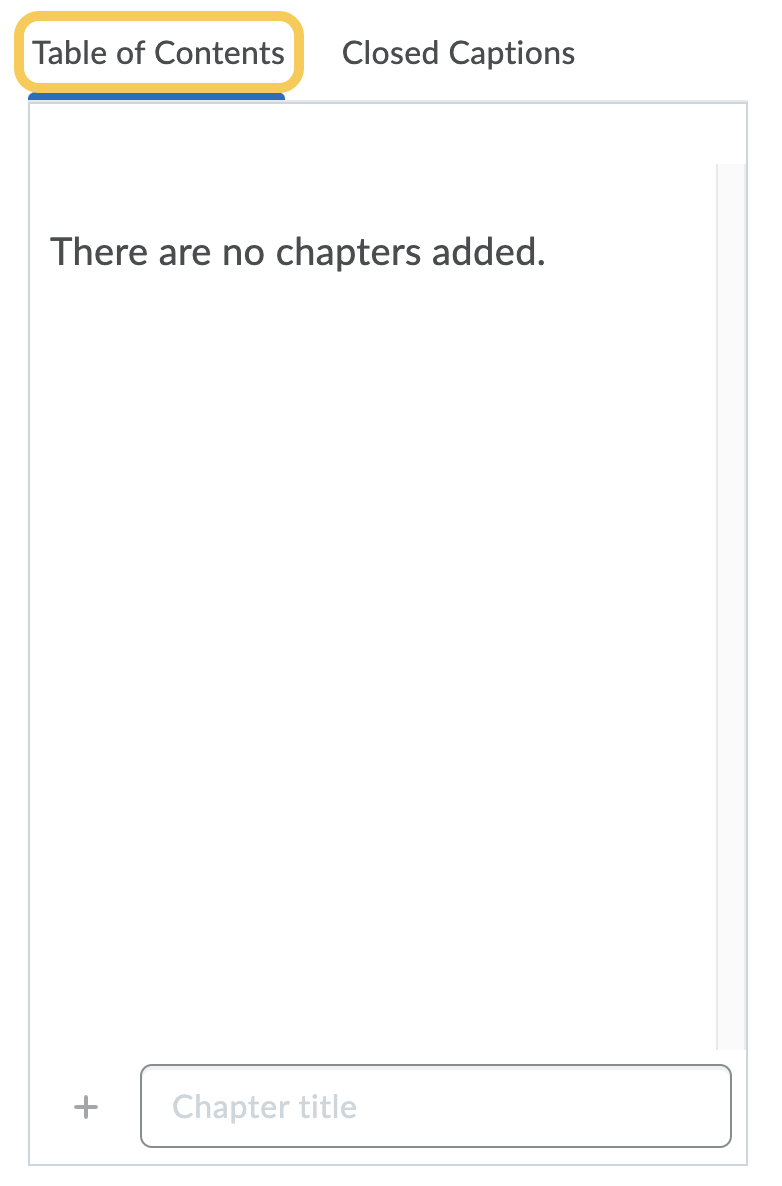
- Use the Seek (arrow) tool to select a space on the timeline where you want your chapter to start.

- Enter your chapter title and click the + button.
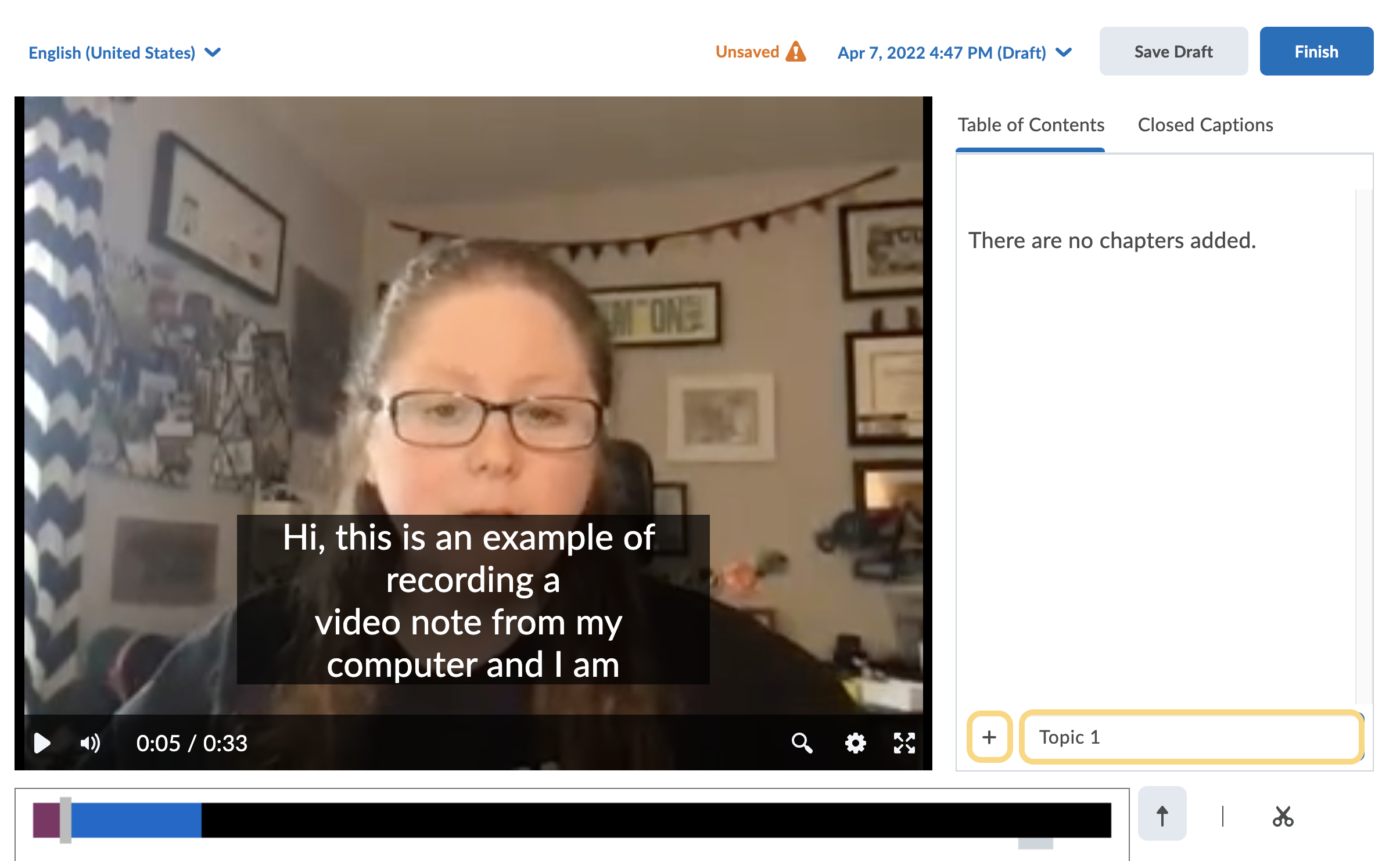
- For the next chapter, select the next spot on the timeline, enter the chapter title and click +.

- Optional: If you add an incorrect time, you can update it by selecting a spot on the timeline and clicking the clock icon beside that Chapter in Table of Contents.
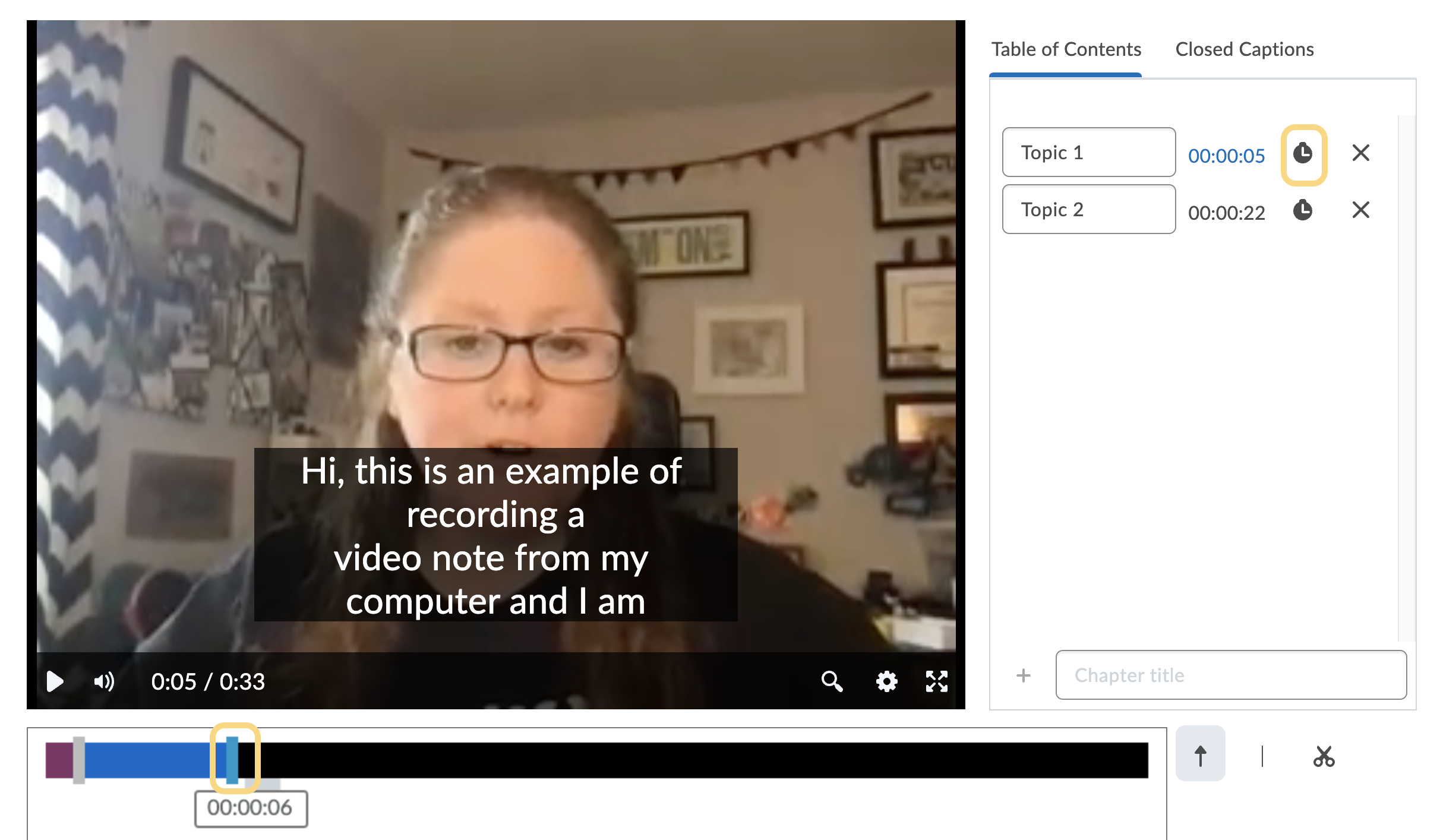
- Optional: Click X to remove the entry.
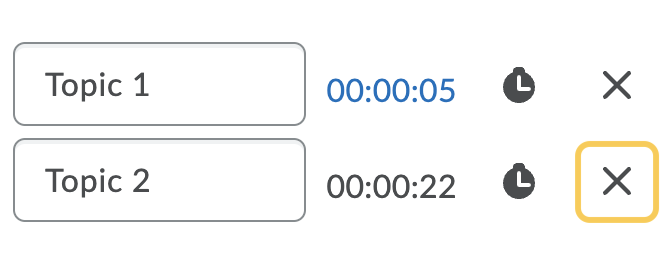
Closed Captions
Adding Closed Captions is important, not only for accessibility, but also to allow viewers to search by keywords. Users have the ability to search for a keyword in the video caption track and see those spots reflected on the timeline. A caption track must be present for the video and the user must have captions turned on to use the search option.
Create Closed Captions
- Select the Language from the dropdown menu on the top left side of the video. This selection will be used for closed captions.

- Click the Closed Captions tab on the top right side of the video.

- If you already see captions in this panel because you generated them when you created your video, then you can skip to the “Edit Closed Caption” section below.
- Do either:
- Recommended: Click Auto-generate.
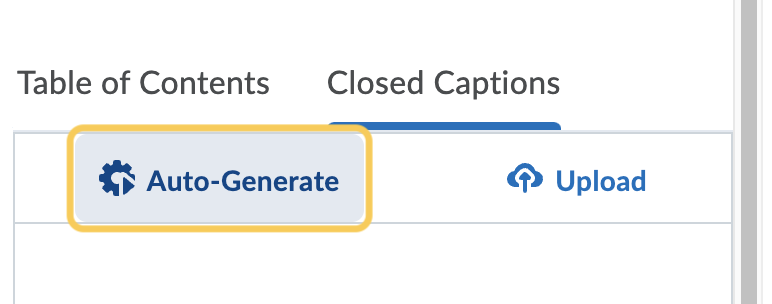
A pop-up box will appear with the following message “When auto-generation begins, your current changes will be saved. When auto-generation finishes, your changes will be published along with the generated captions. If the current language has captions, they will be overwritten. You will be able to continue editing this media file after auto-generation is complete. If you proceed, all references to this media file throughout the LMS will receive your changes.” Click Auto-Generate.
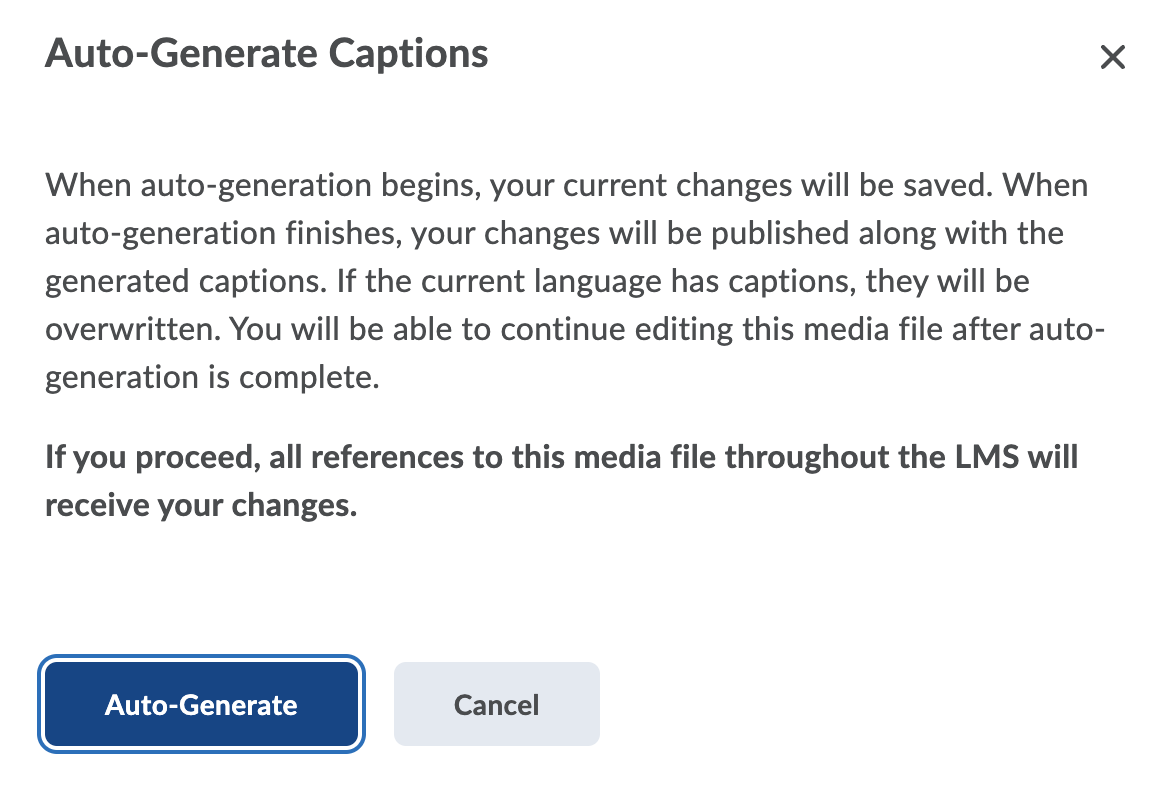
- Or Upload a .vtt or .srt file.
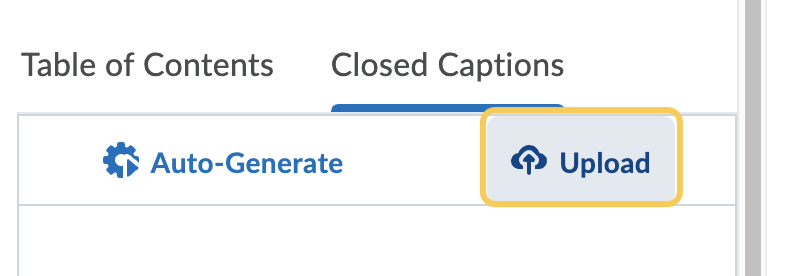
- Recommended: Click Auto-generate.
Edit Closed Captions
Once the captions are generated, you must review and edit them for accuracy
-
- Select the Closed Captions tab.

- The captions will display on the right side of the video.
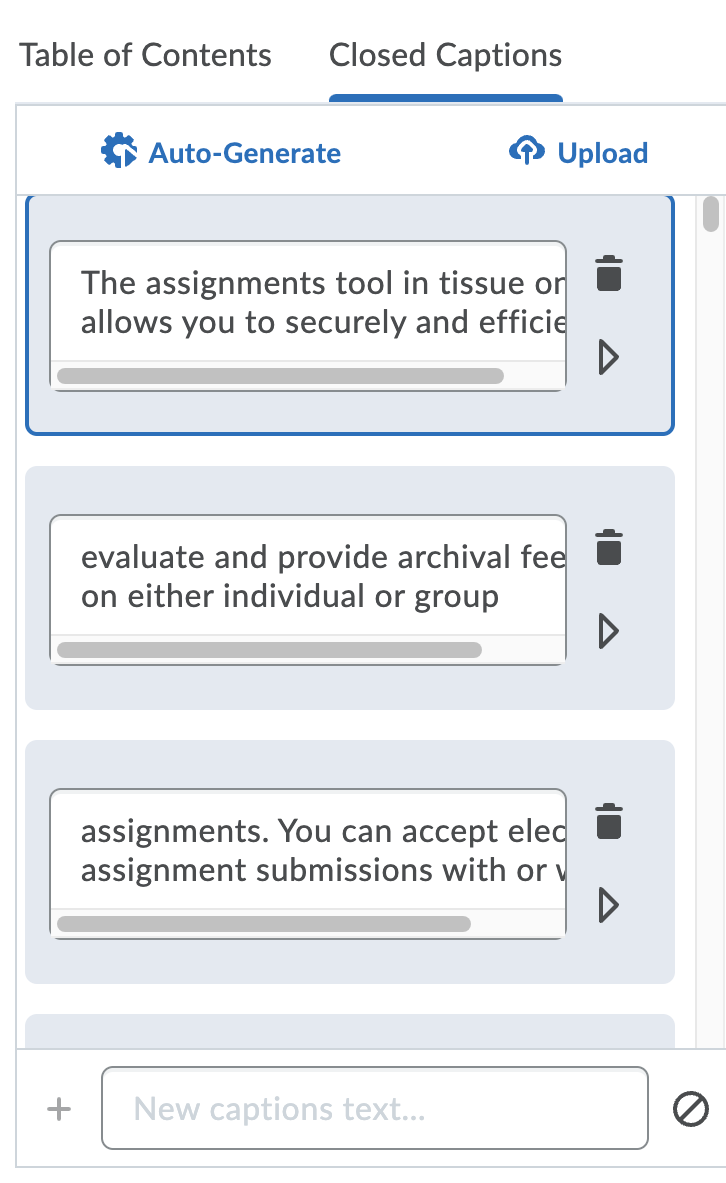
- Review the text for accuracy. If you find issues, click your mouse into the caption field and edit the text as needed.
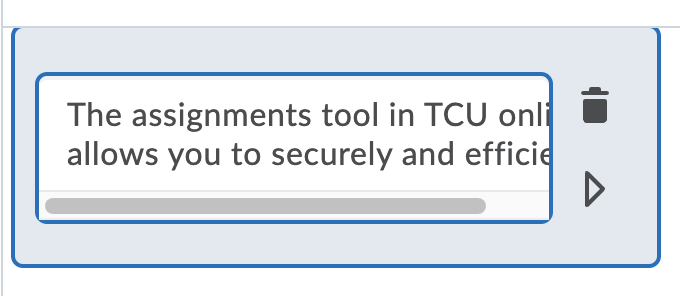
- If you find that captions are not flowing naturally with the sentences or speech pattern, you can modify the caption text (typically by cut/paste excess text into the previous or next caption). Then, click the arrow to open the expanded controls for this caption cue.Next, click play on the video in the video preview, up until the point the next caption needs to begin & pause the video. To set the new caption end time, click the clock to the right of the “End” time for that caption.
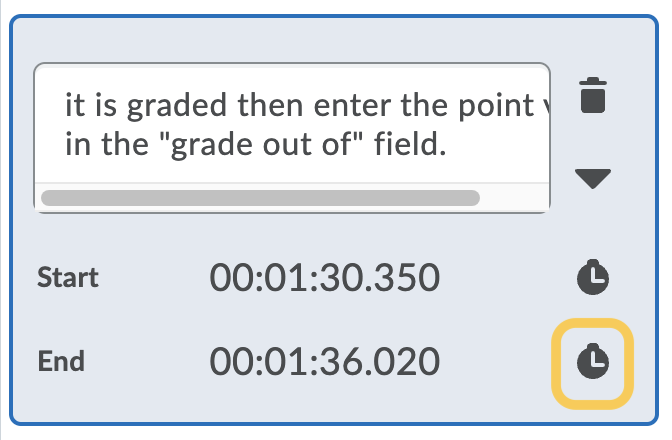
- Select the Closed Captions tab.
- To snip out parts of your media file, First, select the Mark (line) tool, and click your mouse on the timeline to mark places on the timeline at the starting point and ending point of the part you wish to remove.
- When you are done editing, you can:

- Save Draft – keeps the changes, but doesn’t update the published file(s)
- Finish – saves the changes and publishes a new version of the file
- Use the version timeline dropdown (this is a date + time) to return to a previous version of the file. The latest Saved version appears wherever the file is used within TCU Online.
